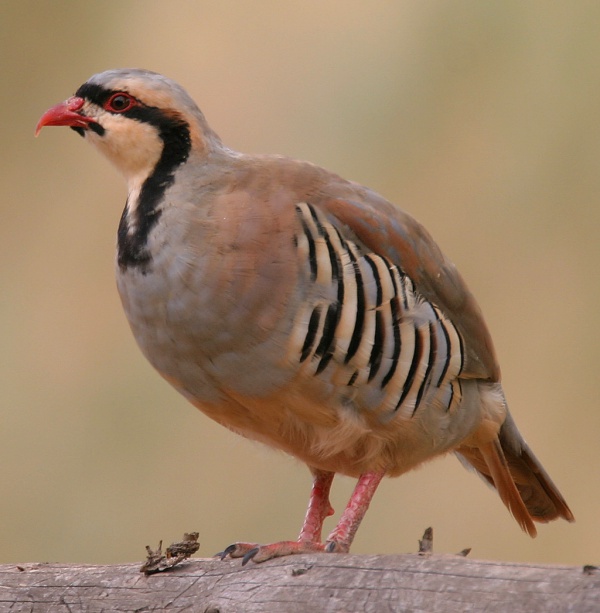Facts About Chukar partridge
The chukar partridge, commonly referred to as the chukar, is an upland gamebird belonging to the pheasant family. It is closely related to other partridges such as the rock partridge, Philby's partridge, and Przevalski's partridge. The chukar can be easily identified by its distinctive markings: black and white bars on its sides, and a black band that extends from its eyes down its head, forming a necklace around its white throat.
Originally native to parts of the Middle East and temperate Asia, chukars have been introduced to other regions, including North America and New Zealand, where they have successfully established wild populations.
Chukars are robust, round-bodied birds, measuring approximately 32–35 cm in length. They have light brown backs, grey breasts, and buff-colored bellies. They are known for their characteristic call, which sounds like "chuck-chuck-chukar-chukar" from which they derive their name. In their native habitats, chukars are often found on rocky, open hillsides with grass, scrub, or cultivated areas.
Having been widely introduced as game birds, chukars now have feral populations in the United States, Canada, Chile, Argentina, and New Zealand. However, they sometimes interbreed with red-legged partridges, which can pose a threat to native populations.
There are fourteen recognized subspecies of chukar across different regions in Asia. Despite being hunted and facing habitat changes, their populations are generally stable. This stability is primarily because their numbers are more influenced by weather conditions during the breeding season than by human activities.
During the non-breeding season, chukars gather in small groups called coveys. In the summer, they form pairs for breeding. Their courtship behaviors include displays, mutual feeding, and mating. They nest in simple ground scrapes and lay about 7 to 14 eggs, which hatch after 23–25 days. The chicks forage with their parents and learn to fly using a technique called wing-assisted incline running.
Chukars primarily feed on seeds, insects, and grit, with a particular fondness for succulent plants which help them meet their water needs. At night, they roost on rocky slopes or under shrubs, and in winter, they take measures to conserve heat and remain vigilant against predators.
Golden eagles are natural predators of chukars, and in captivity, they can be vulnerable to diseases such as Mycoplasma. Despite these threats, chukars are resilient birds that have adapted to a variety of environments.

 Tajikistan
Tajikistan